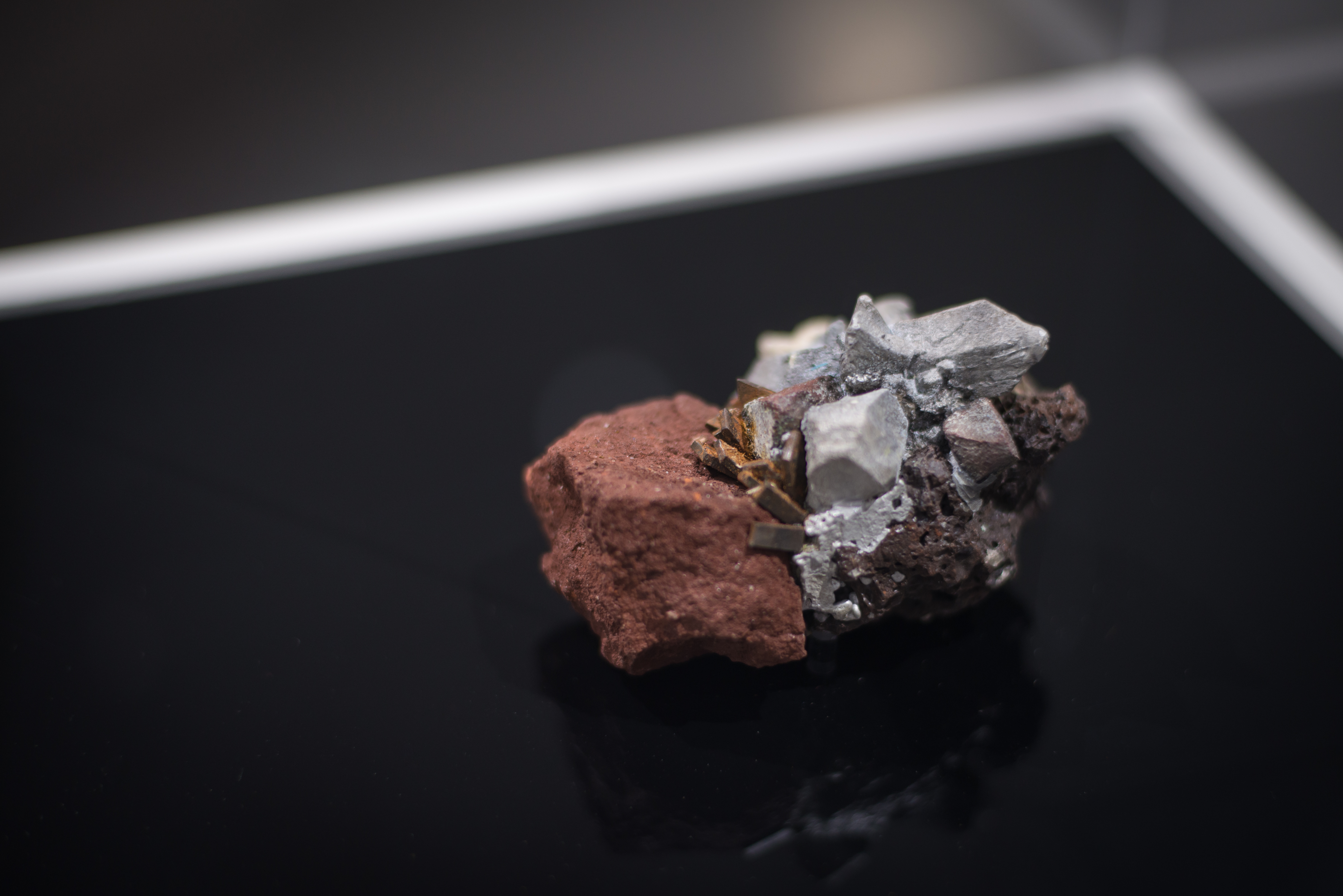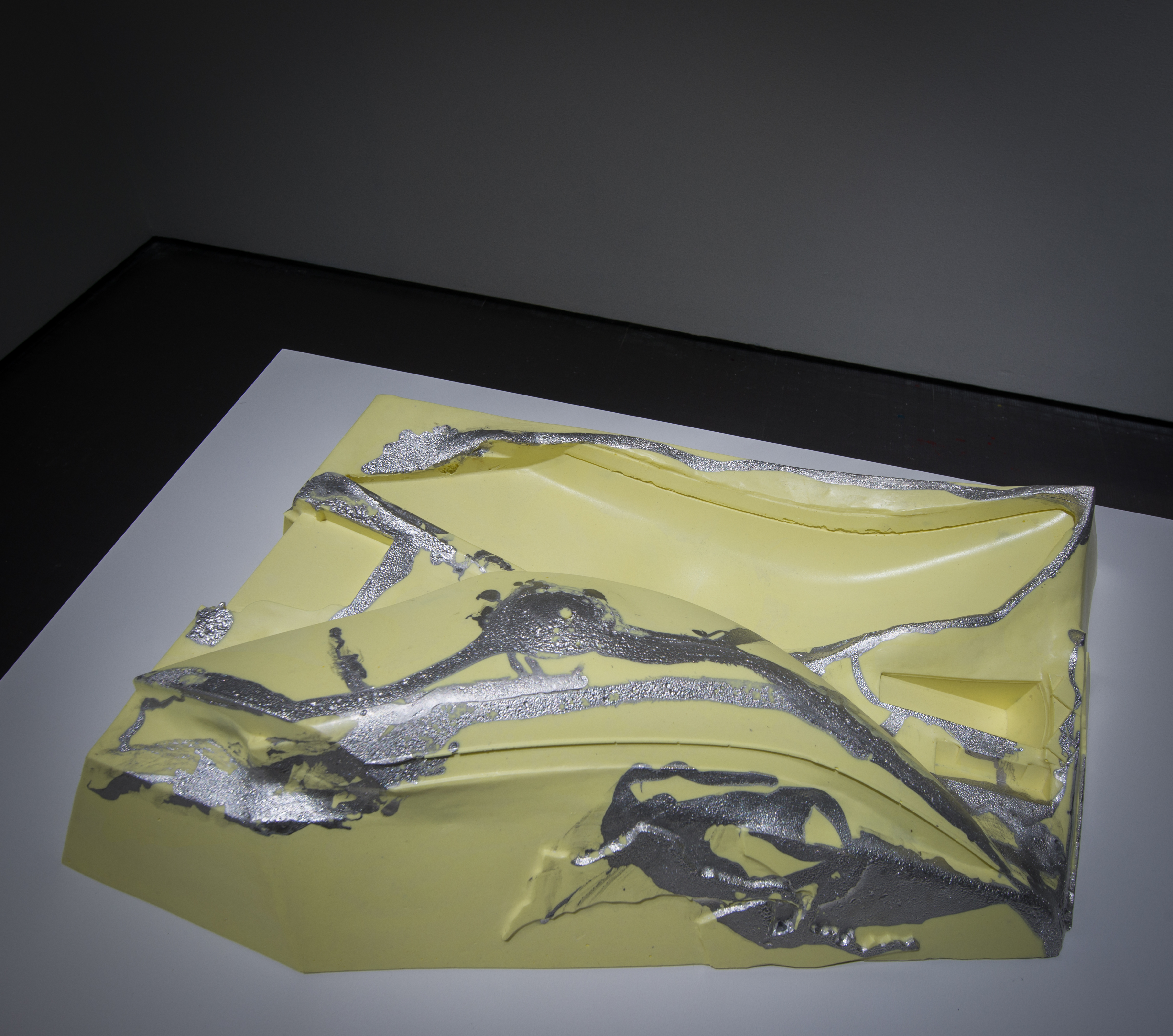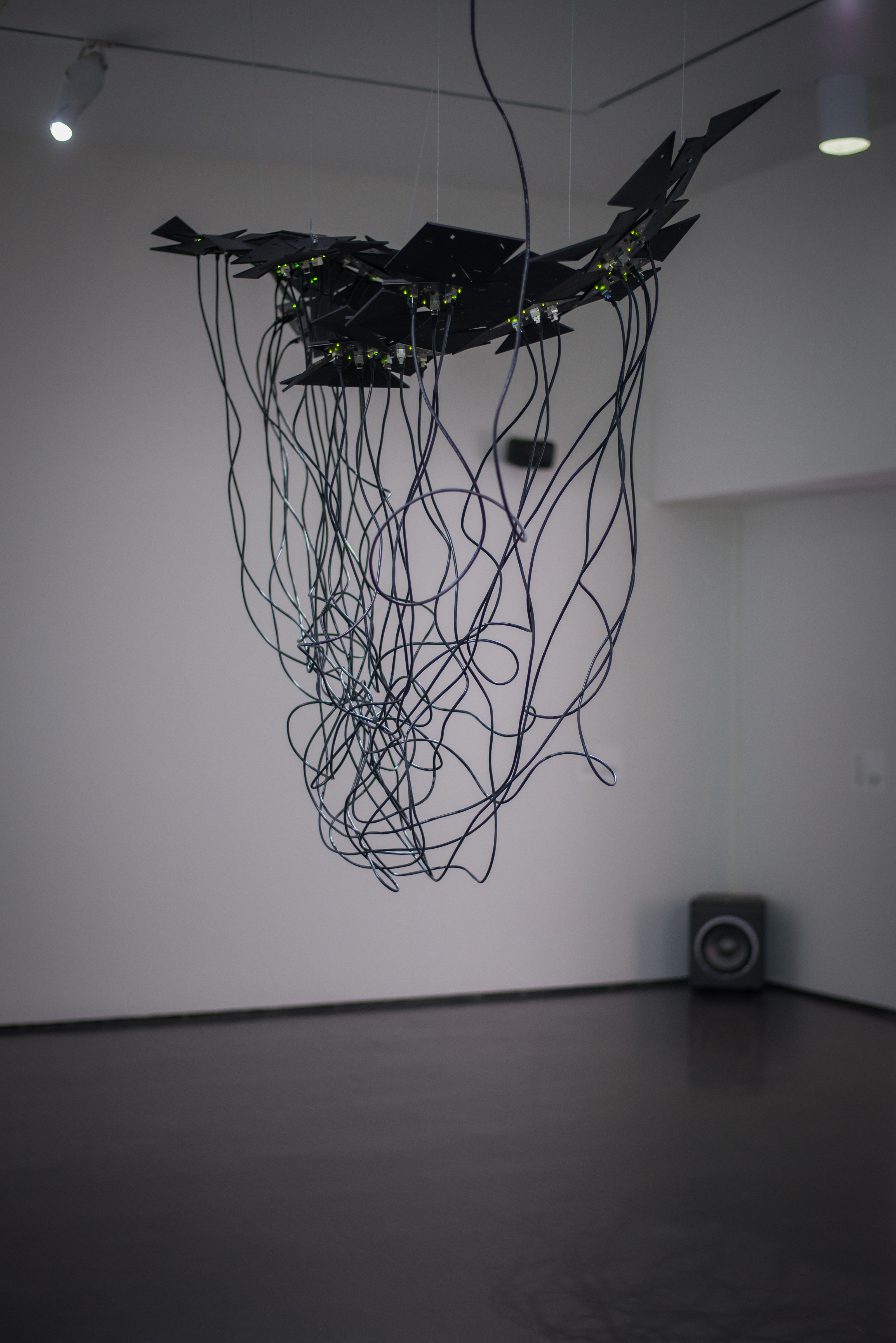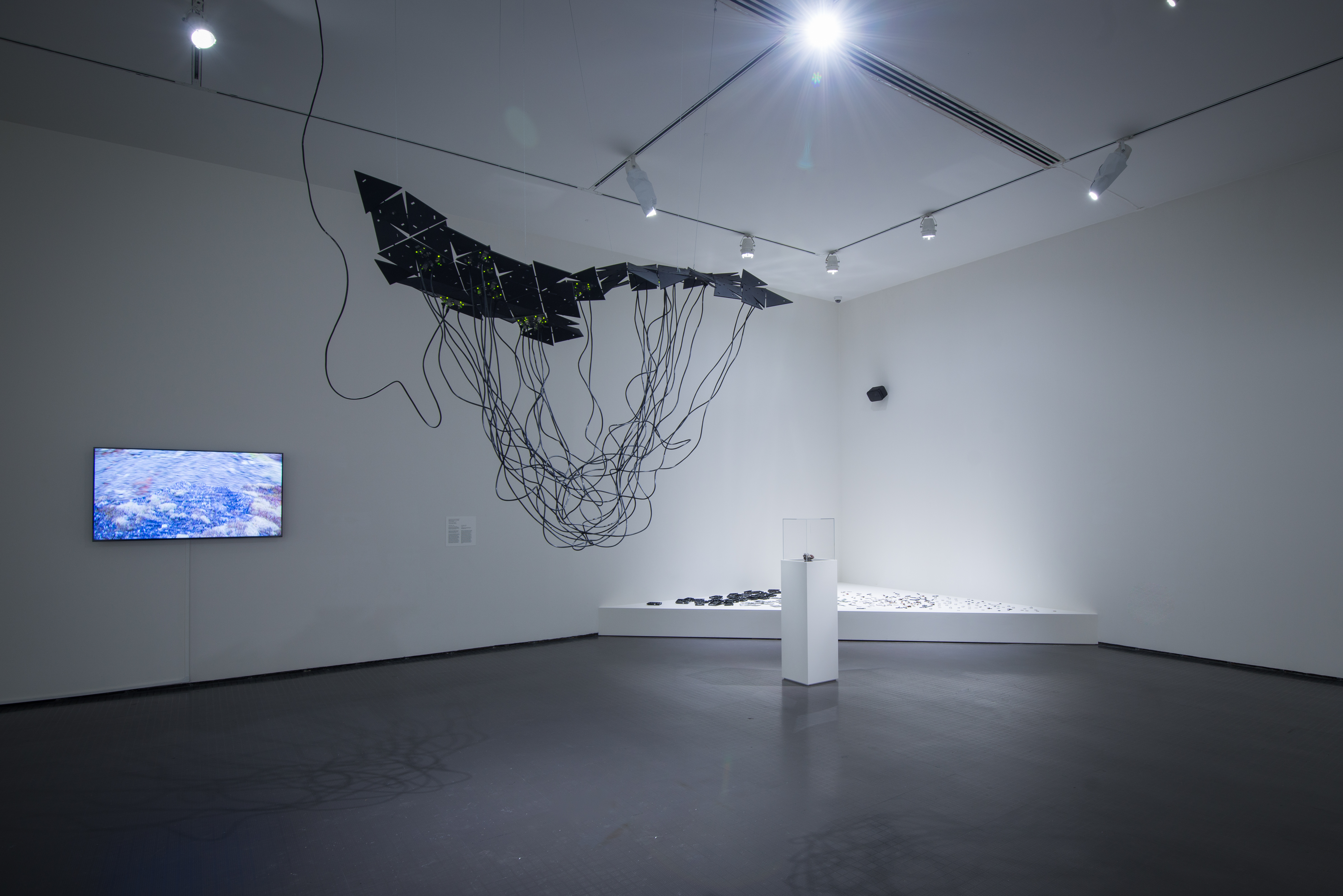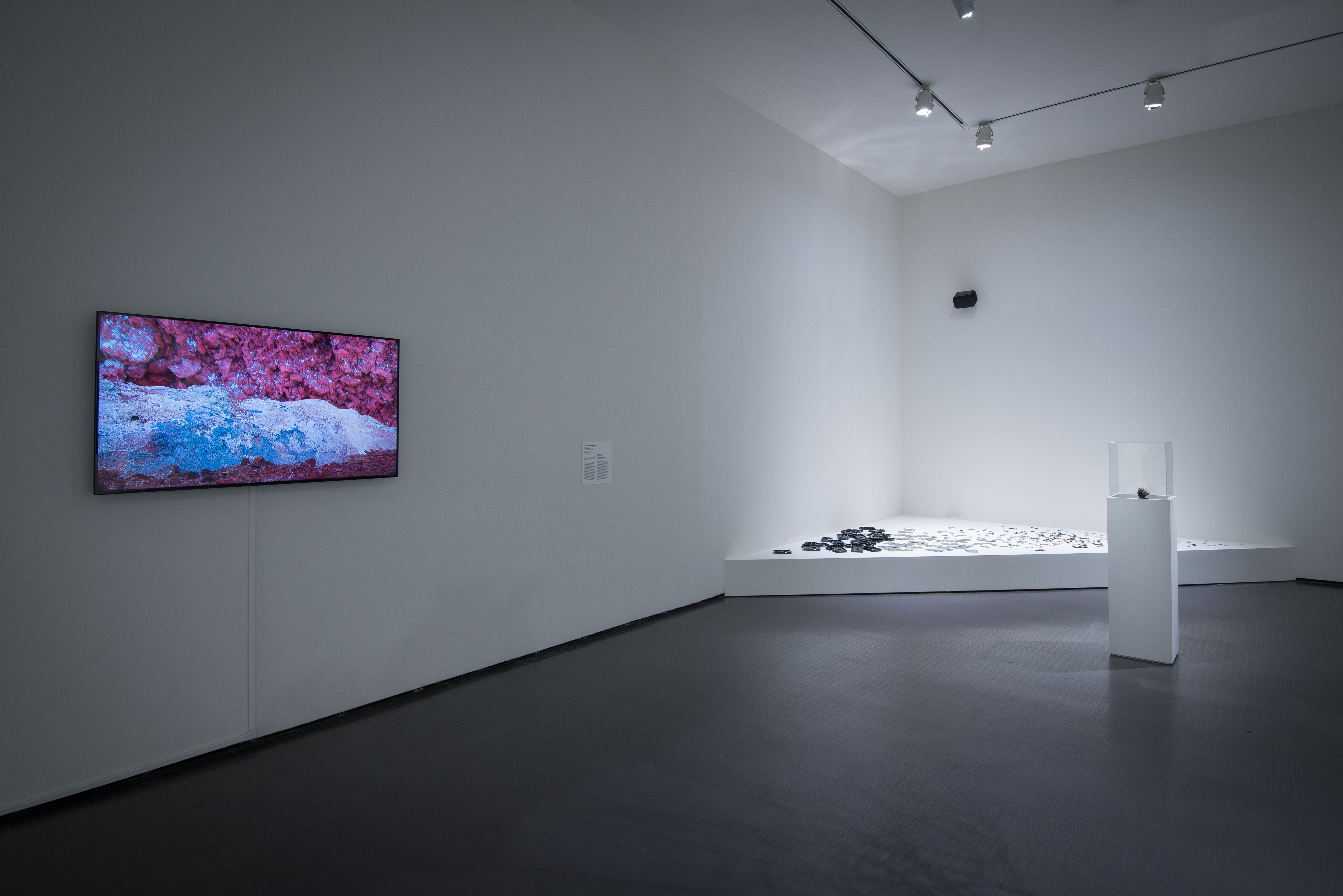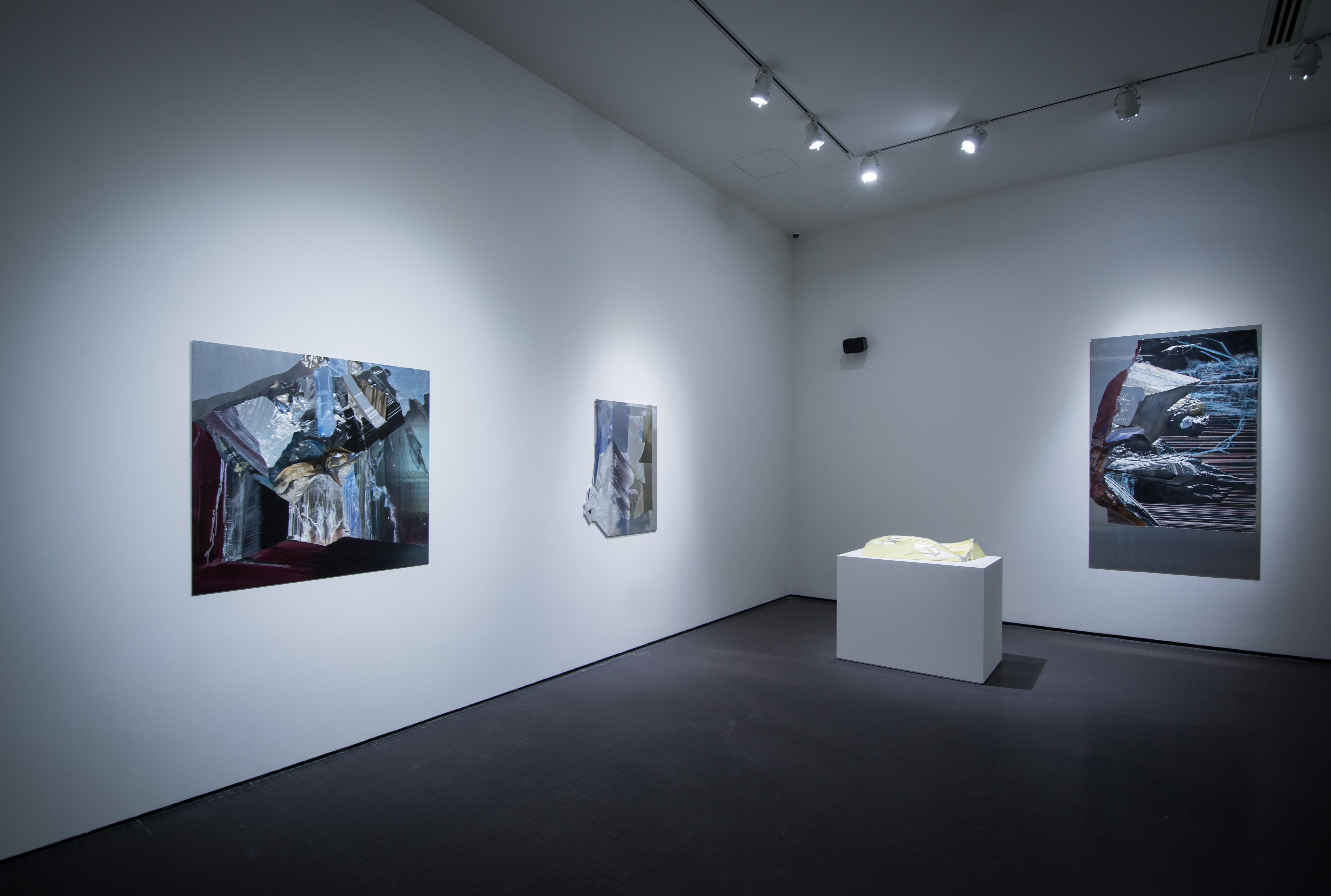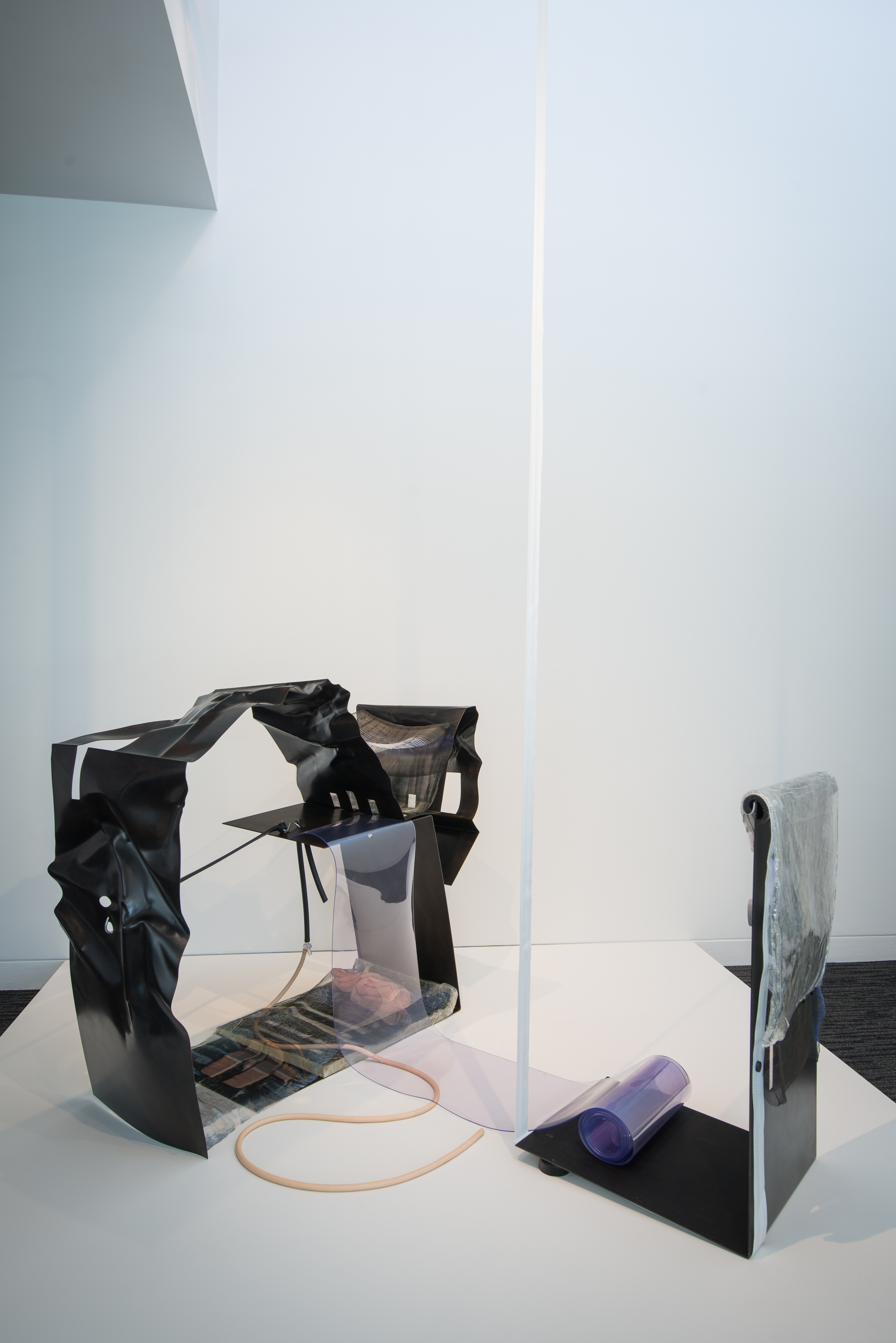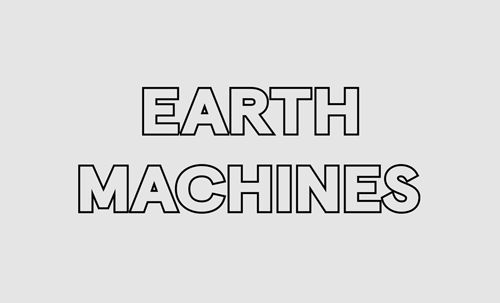
Addie Wagenknecht Cloud Farming (detail), from the series Data and Dragons (2013–ongoing), 2014
Courtesy bitforms gallery, New York
Photo: Charlie Villyard
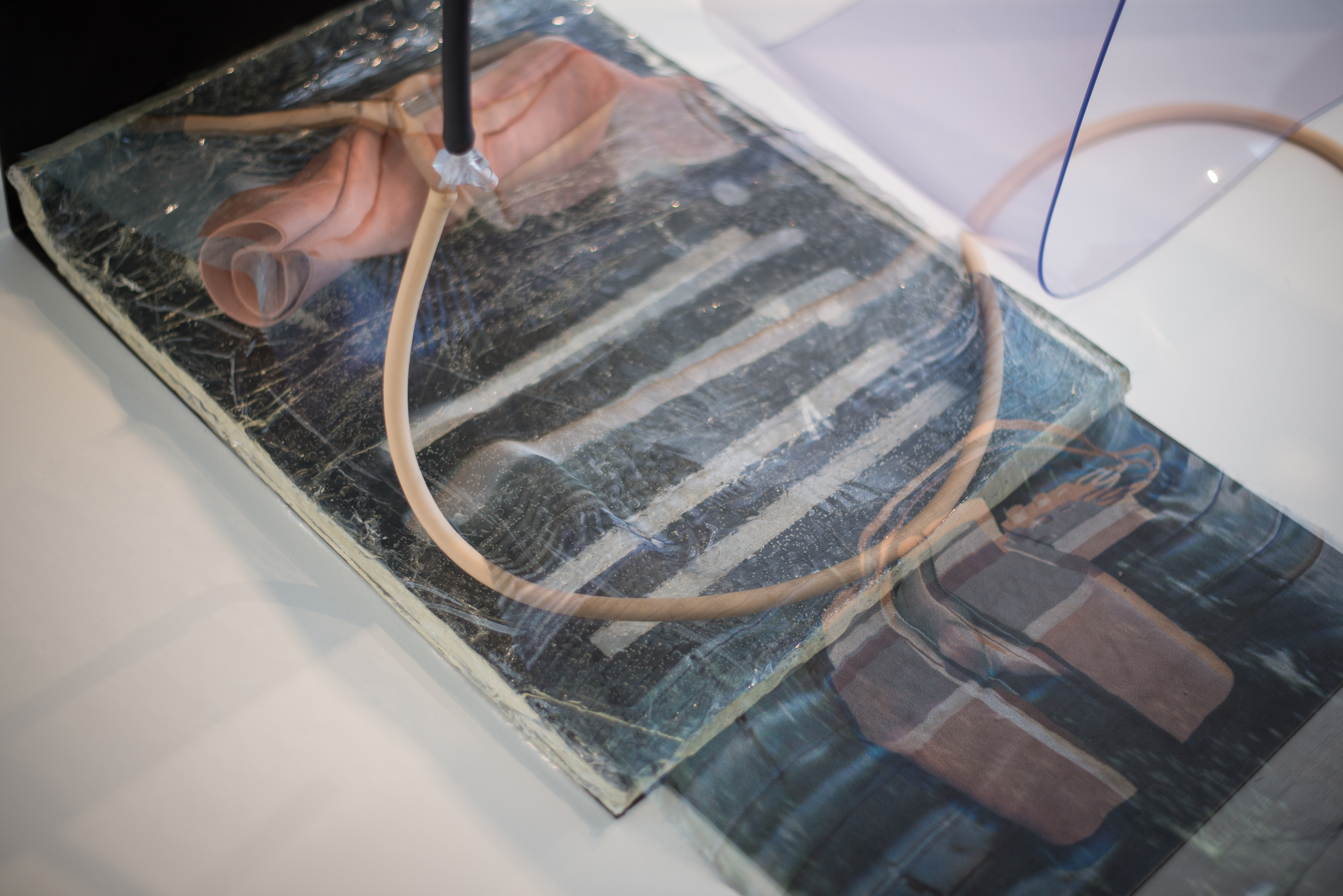
Alisa Baremboym, Parasorbal Systems (detail), 2014
Courtesy the artist and 47 Canal, New York
Photo: Charlie Villyard
Earth Machines
- VENUE Yerba Buena Center for the Arts
- LOCATION San Francisco, CA
- DATES August 14, 2015-December 6, 2015
- URL ybca.org
- BROCHURE cecimoss.com
- PRESS https://cecimoss.com/wp-content/uploads/2016/03/Earth Machines_Press_YBCA.pdf
Artists: Alisa Baremboym, Revital Cohen and Tuur Van Balen, Spiros Hadjidjanos, Robert Aiki Aubrey Lowe, Kevin McElvaney, Leslie Shows, Addie Wagenknecht
Description: Through photography, sculpture, sound, and painting, Earth Machines considers the relentless stream of new technological products in light of their underlying material precariousness and profound ecological impact. A small group exhibition that exists as both a meditation on and a snapshot of this complex subject, each work explores a different facet of the rapid production of electronics and the resulting environmental effects, from rare earth mining to the disposal of e-waste to the long-term decomposition of this detritus. Our laptops, cell phones, and other gadgets derive from and return to the earth, urgently requiring awareness and conversation regarding this cyclic process in an era marked by humanity’s permanent impact on the planet.
Seventeen rare earth elements, including neodymium, dysprosium, and lanthanum, are crucial for the fabrication of mobile phones, computers, gaming consoles, rechargeable batteries, and more. But the process of extracting these elements is messy and problematic. For example, ninety-five percent of the world’s supply derives from environmentally corrosive mining in China, where towns such as Baotou have become irreparably polluted. An ongoing series by the artists Revital Cohen and Tuur Van Balen explores the geopolitical map of rare earth extraction. In a new work for this exhibition, they have created an artificial ore from metals taken out of decommissioned hard drives sourced from the DataCell data center in Iceland, which is then combined with lava rock from the region. Many data centers are relocating to Iceland because of the country’s renewable hydroelectric and geothermal energy, in addition to the climate’s natural cooling of heat-releasing servers. Iceland also maintains and promotes very progressive laws in regards to data privacy and free speech, assuring certain protections for that data. The project calls attention to the environmental and political reality of data processing and storage, and its dependence upon the earth’s climate and limited resources.
Other works use disassembly and deconstruction to consider the materials and design of electronics. Spiros Hadjidjanos’s Displaced (Smartphone) (2014) transforms a standard iPhone into a 3D aluminum sculpture, forefronting the metal elements, rare earth and otherwise, that allow the mobile phone to operate. In another gesture against obfuscation, Addie Wagenknecht’s hanging sculpture Cloud Farming (2014) hovers in the gallery. The concept of cloud computing, a metaphor inspired by a natural phenomenon, is physically manifested in a foreboding, suspended mass of circuit boards and cables that, via custom hardware and what are known as packet sniffers, passively captures all live data passing through the area, its unauthorized surveillance made visible in blinking LEDs.
Existing dedicated electronics recycling programs are for the most part woefully inadequate, and often e-waste is thrown into dumps and landfills, further contributing to pollution. Kevin McElvaney’s photographs of the world’s largest e-waste dump, Agbogbloshie, located outside of Accra, Ghana, captures the stark reality of unregulated dumping. For his series Agbogbloshie (2013), McElvaney interviewed and photographed the scavengers at the site who excavate valuable copper from old computers, cables, and televisions. Each portrait features a worker staring directly into the camera while standing atop rubbish, with the burning wasteland as a background.
The long-term effects of a constant stream of new products is imagined in Alisa Baremboym’s abstract sculptures that meld ceramics and machine-made products. This work gestures toward new hybrid objects that are neither identifiably organic nor natural, a reflection on the future of industrial production and on the presence of e-waste and plastic in progressive sedimentary layers. The irreversible human imprint on the deep geological time of the planet is apparent in Leslie Shows’s paintings, where the artist layers and recomposes multiple micro and macro views of various minerals onto large aluminum sheets. These new formations are placed near her work Cantra (2013), a yellow sulfur sculpture modeled after the injection molds used in the production of electronics and consumer goods. Mined from the ground or left over as a petroleum byproduct, the element sulfur is itself widely used in manufacturing.
Finally, intermittently echoing throughout the gallery is a sound composition by the artist and musician Robert Aiki Aubrey Lowe, whose work blends voice and electronics. This audio piece poetically signals the natural world and its transformation, suggesting a multilayered movement between organic and inorganic, natural and artificial that feeds the seeming necessity for perpetual innovation.

